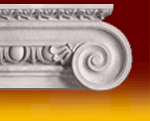|
Before World War
I, war was often glorified. Modernist poets question whether any true glory can come from warfare. For example, in his poem
“Grass” Carl Sandburg depicts the destruction of war from the perspective of grass. “Pile the bodies high at Austerlitz and Waterloo/Shovel them under and let me work/I am the grass;
I cover all” (Sandburg 1-3). By analyzing war from this gross and diminished point of view, Sandburg removes
any glory given to the act of war or battle.

Edgar Allen Poe’s poem “To
Helen” idealizes of perfect beauty, alluding to the face that launched a thousand ships. “How statuelike I see thee stand/ The agate lamp within thy hand!” (17-18). Within these short lines,
Poe remarks on Helen’s apparent “statuelike” appearance, ultimately idolizing beauty over intellect.
|

